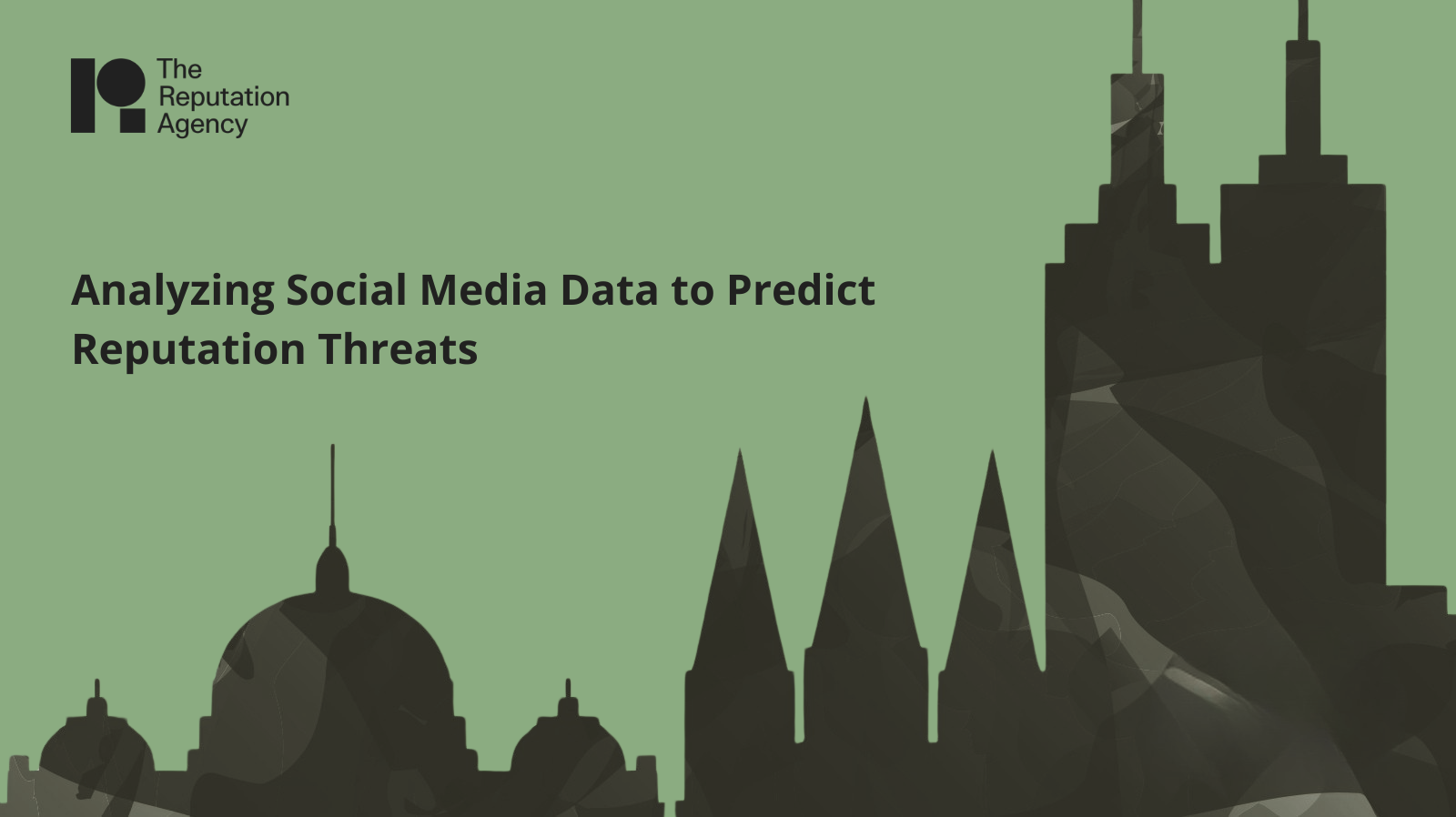Analyzing Social Media Data to Predict Reputation Threats
The Role of Social Media in Reputation Management
Social media has become a primary channel where public opinion forms and spreads rapidly. Monitoring these platforms provides organisations with critical insights into potential reputation risks, allowing for timely responses and proactive management of brand perception.
Steps to Analyse Social Media Data for Reputation Threats
1. Define Your Monitoring Objectives
Establish clear goals for social media monitoring:
Identify emerging negative trends or sentiment
Track mentions of key executives, products, or services
Detect misinformation or coordinated attacks
Well-defined objectives guide data collection and analysis.
2. Select Relevant Platforms and Tools
Focus on the channels most relevant to your audience:
Twitter/X and LinkedIn for professional discourse
Facebook, Instagram, and YouTube for consumer engagement
Social listening tools like Brandwatch, Sprout Social, or Talkwalker
Choosing the right platforms ensures meaningful and actionable insights.
3. Collect and Filter Data
Gather social media mentions, comments, and hashtags:
Use keyword and hashtag tracking
Monitor competitor mentions for contextual understanding
Filter noise to focus on high-impact signals
Accurate data collection is the foundation of effective analysis.
4. Analyse Sentiment and Engagement
Evaluate tone, emotion, and level of engagement:
Identify negative sentiment spikes that may indicate emerging threats
Assess the reach and influence of critical posts
Detect patterns in audience reactions to specific topics
Sentiment analysis enables prioritisation of responses.
5. Identify Early Warning Signals
Proactively detect potential reputation risks:
Look for trending complaints or complaints clusters
Track influencer and media mentions for amplification potential
Monitor sudden changes in engagement metrics
Early detection allows timely intervention and mitigation.
6. Develop Actionable Insights
Turn data into decisions:
Inform crisis response strategies
Guide messaging adjustments and communication campaigns
Provide executives with risk reports and recommendations
Data-driven insights strengthen reputation resilience and preparedness.
Did You Know?
Companies that monitor social media for reputation threats can respond up to 3x faster, reducing potential brand damage significantly.
Proactive Reputation Protection Through Social Media
By analysing social media data strategically, organisations can anticipate risks before they escalate. Combining monitoring, analysis, and proactive communication ensures your brand remains trusted and resilient in the digital landscape.
Need Expert Support in Social Media Risk Analysis?
The Reputation Agency helps organisations predict and mitigate reputation threats through advanced social media analytics. Explore our digital reputation management services to safeguard your brand.
FAQs
1. Why is social media data important for reputation management?
It provides real-time insights into public sentiment and emerging threats that could affect your brand.
2. Which platforms should organisations monitor?
Focus on channels where your audience and stakeholders are most active, like LinkedIn, Twitter/X, Facebook, and Instagram.
3. How can sentiment analysis help in predicting risks?
It identifies negative trends or spikes in engagement, allowing organisations to intervene before issues escalate.
4. What tools are effective for social media monitoring?
Social listening tools like Brandwatch, Sprout Social, Talkwalker, and native analytics platforms provide actionable data.
5. How do you convert social media data into actionable insights?
By detecting patterns, prioritising risks, and providing targeted recommendations to guide communications and response strategies.

